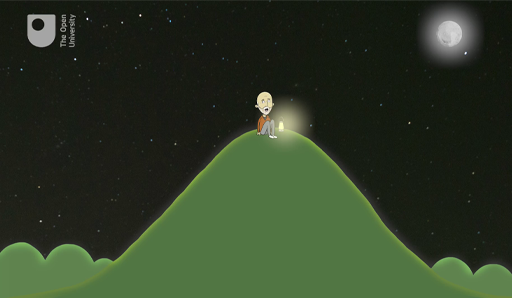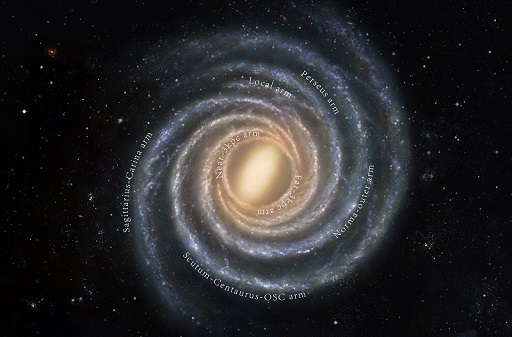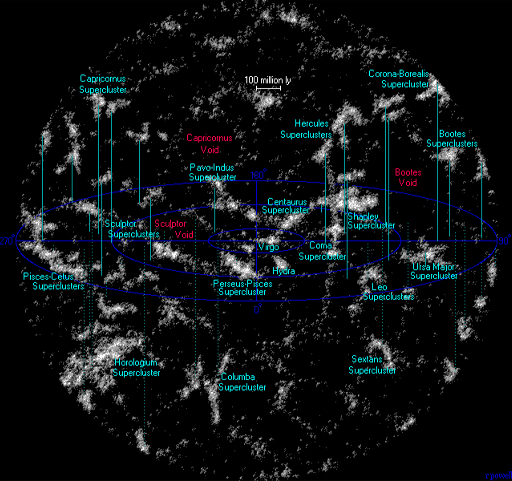1 Our place in space
We know that the Sun is a star, one of several hundred billion stars that make up our galaxy, the Milky Way. The Milky Way is part of a cluster of about 40 galaxies known as the Local Group, which is itself associated with the much bigger Virgo Cluster containing more than 2000 galaxies. This and other clusters are bound up superclusters. It is these superclusters that make up the landscape of the universe on the largest scales. Figure 1 shows an artist’s impression of the spiral structure of our galaxy, the Milky Way, based on recent observations. The Sun is just below the ‘o’ in the Local Arm. The image is about 100 000 light years across.
Figure 2 depicts the superclusters that make up our neighbourhood in the universe. The Local Group lies just to the left of the Virgo cluster in the centre of the image, which is about 2 billion light years across.
Our clear picture of the universe is relatively recent. Barely a century ago the universe was thought to be a much smaller place. The common belief was that the Milky Way was the entire universe and sat in an otherwise empty void. The misty patches now known to be other galaxies were thought to be part of the Milky Way itself. It was only in the early 1920s that astronomers began to realise the enormous scale of the universe, and our knowledge of its extent has grown ever since. Video 2 explores our history of looking into space, and introduces a few of this week’s ideas.

Transcript: Video 2 Timeline of our understanding
The distances involved in this topic are staggering when you think about them. The furthest superclusters in Figure 2 lie about a billion light years away. That’s a huge distance – but how much further can we go?


